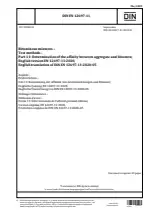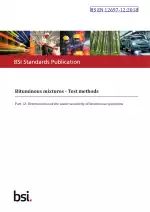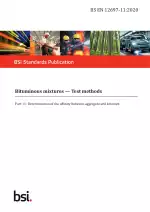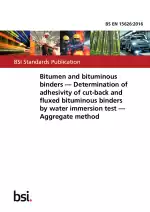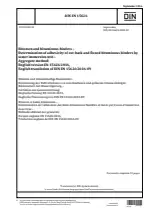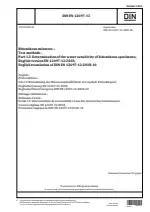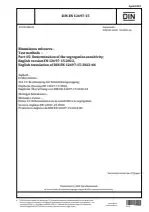Bituminous mixtures - Test methods - Part 11: Determination of the affinity between aggregate and bitumen
Also Known As:
The DIN EN 12697-11 standard focuses on determining the affinity between aggregate and bitumen in bituminous mixtures. The purpose of this standard is to assess the susceptibility of the aggregate-bitumen combination to stripping, which refers to the separation of bitumen from the aggregate surface. The determination of affinity is intended to assist in mixture design rather than being a definitive test.
The standard provides procedures for evaluating the adhesion between different binders and aggregates, as well as the effect of moisture on these combinations. Various adhesion agents, including liquids like amines and fillers like hydrated lime or cement, can be incorporated into the evaluation. The affinity between aggregate and bitumen is assessed using the rolling bottle method, which involves visually observing the level of bitumen coverage on uncompacted bitumen-coated mineral aggregate particles after mechanical stirring in the presence of water.
| Descriptors | Asphalts, Bitumens, Bituminous, Compatibility, Construction, Construction materials, Definitions, Determination, Hot mix asphalts, Immersion, Mathematical calculations, Mechanical properties, Mineral aggregates, Performance tests, Physical properties, Properties, Qualification tests, Road construction, Testing, Visual inspection (testing) |
| ICS Codes | 93.080.20 - Road construction materials |
| Language(s) | English |
| File Size | 2.0 MB |

